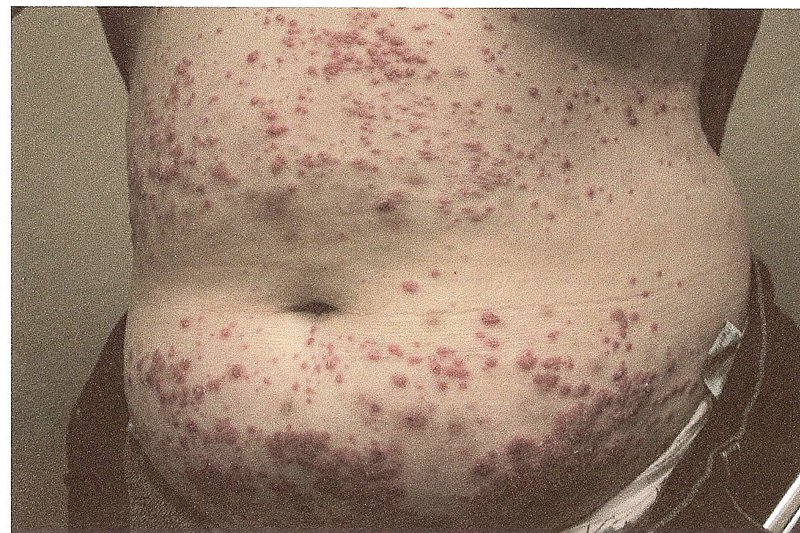Presenter: Carl Barrick, DO and Tanya Ermolovich, DO
Dermatology Program: Lehigh Valley Health Network/PCOM
Program Director: Stephen Purcell, DO
Submitted on: February 28, 2018
CHIEF COMPLAINT: Vegetative plaques right axilla, umbilicus, bilateral inguinal folds and scrotum with extension to anus
CLINICAL HISTORY: 34 year-old Caucasian male with vegetative plaques right axilla, umbilicus, bilateral inguinal folds and scrotum with extension to anus. The patient presents with ulceration and crusting of his nose and lips for six weeks. He has had thick, crusted lesions and swelling of his scrotum for three months. The lesions are asymptomatic although the ulcerations in his mouth are painful. He admits to feeling well without fevers, chills, dysphagia, diarrhea, abdominal pain, or joint pain. No previous treatment to lesions.
Medical History: Asthma
Social History: Heterosexual, sexually active, self-employed, never smoked cigarettes, denies alcohol use, denies history of drug abuse
PHYSICAL EXAM:
Superficial erosions at base of nares. Scattered mucosal erosions of mouth and fissured tongue. Thick, pink to brown plaques: right axilla, umbilicus, bilateral inguinal folds and scrotum with extension to anus.
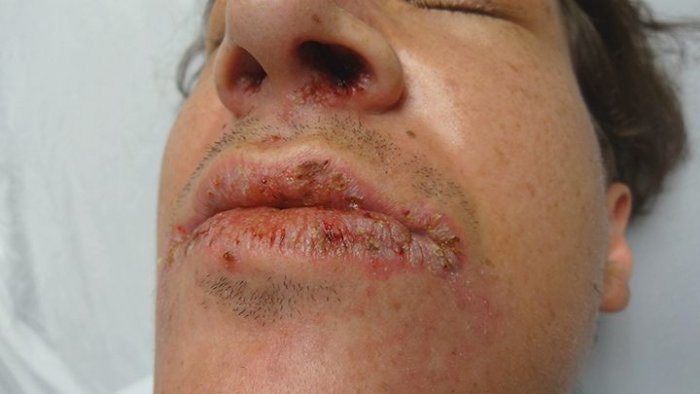
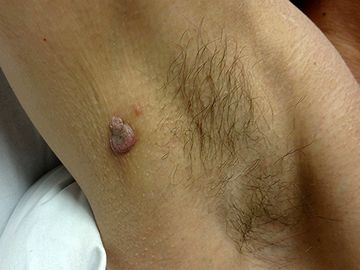
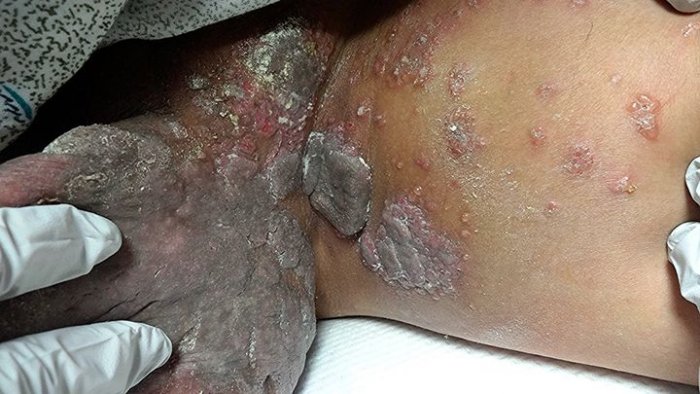
LABORATORY TESTS:
Bacterial culture: Staphylococcus aureus and Beta hemolytic Streptococcus group C. Fungal and mycobacterial tissue cultures were negative. Syphilis screen, HIV Ag/Ab, indirect immunofluorescence panel, ANA panel, CBC, CMP are negative or WNL.
DERMATOHISTOPATHOLOGY:
Right inguinal crease: “Epidermal hyperplasia, papillomatosis, and intraepidermal eosinophilic microabcesses. PAS is negative.”
Right anterior thigh: “Eosinophilic spongiosis. PAS is negative.”
Umbilicus, Direct immunofluorescence: “Weak intercellular IgG staining in lower third of epidermis, IgM is negative, weak linear IgA staining along DE junction, moderate intercellular C3 staining in lower third of epidermis.”
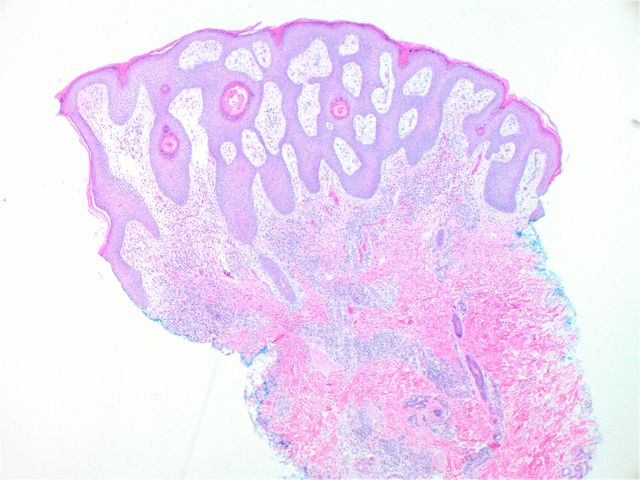
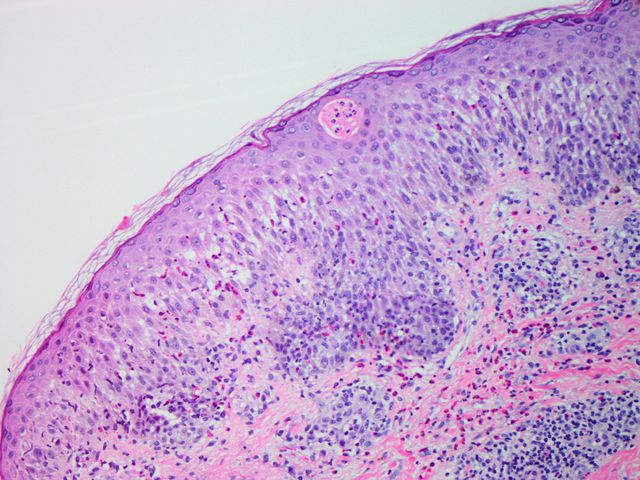
DIFFERENTIAL DIAGNOSIS:
1. Pyostomatitis Vegetans
2. Sarcoidosis
3. Cutaneous Crohn’s Disease
4. Pemphigus Vulgaris
5. Paraneoplastic Pemphigus




